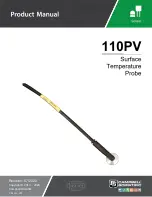
ASB4 manual │ version 1
- 2022
Page:
8 from 14
Supply voltage
The power supply we recommend for powering the ASB4 is a stable DC source between 8 and 12 VDC.
The maximum voltage that can be connected to the ASB is 18VDC DC or 12VAC AC. It is therefore
possible to supply the ASB with an AC voltage. Due to the presence of a bridge rectifier, the ASB is
polarity insensitive. Therefore, it does not matter how you connect the power supply to the Power
connection.
Please note that the voltage AC is a factor of 1.4 higher than the voltage DC coming from the rectifier. In
case of an AC power supply, do not use more than 12VAC, this gives a DC voltage of 15.6VDC. The
present voltage regulator turns this into 5V. The difference in voltage is given off as energy to the heat
sink (dissipation voltage).
Important:
The higher the voltage offered, the more heat is generated in the voltage regulator. The voltage
regulator, to which the heat sink is attached, can become
hot
. This is not a problem, as the maximum
temperature the voltage regulator can tolerate is 125 degrees Celsius. During regular and frequent use,
the temperature can rise to 60-70 degrees Celsius.
Be careful, because it can lead to burns when
touched.
On the two-pole terminal of the ASB4, you can provide the direct voltage as shown in Figure 1. The polarity is
not important here due to the rectifier. If you have connected the polarity correctly, the green POWER LED
lights up.
Servos
Connect the servos to the four three-pole headers as shown in Figure 1. It is important that you connect
the orange wire of the servo cable to the inside of the PCB, as indicated in the picture above. If you
connect the connector the wrong way round, the servo will not respond.
You can extend the servo cable if required. You will find servo extension cables of 30, 50 and 100
centimetres long in the webshop.
Rocker switches
The switches are connected to the eight-pole terminal below the servo connection. The counting goes
from left to right. The operation is quite simple:
Switch open: Servo goes to position A Switch
closed: Servo goes to position B
By the way, it is not necessary to use a rocker switch. Any switch that switches between two contacts is
sufficient to operate the servo. Just make sure that the switch or push-button monitors the position. A
normal push button will only close the contact if you press it. When you release it, the contact will open
again and the servo will return to position A.
































